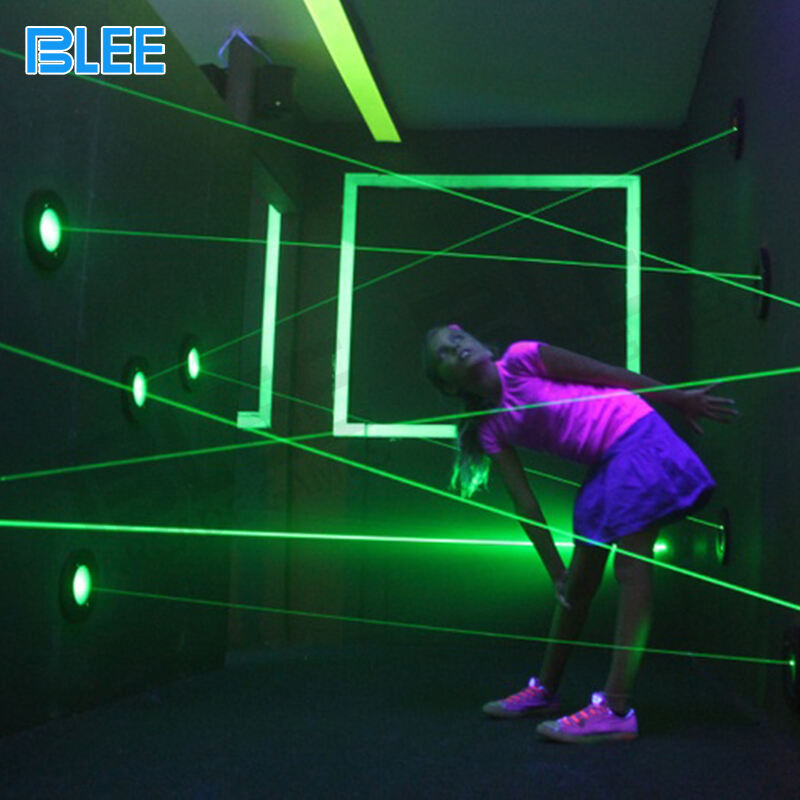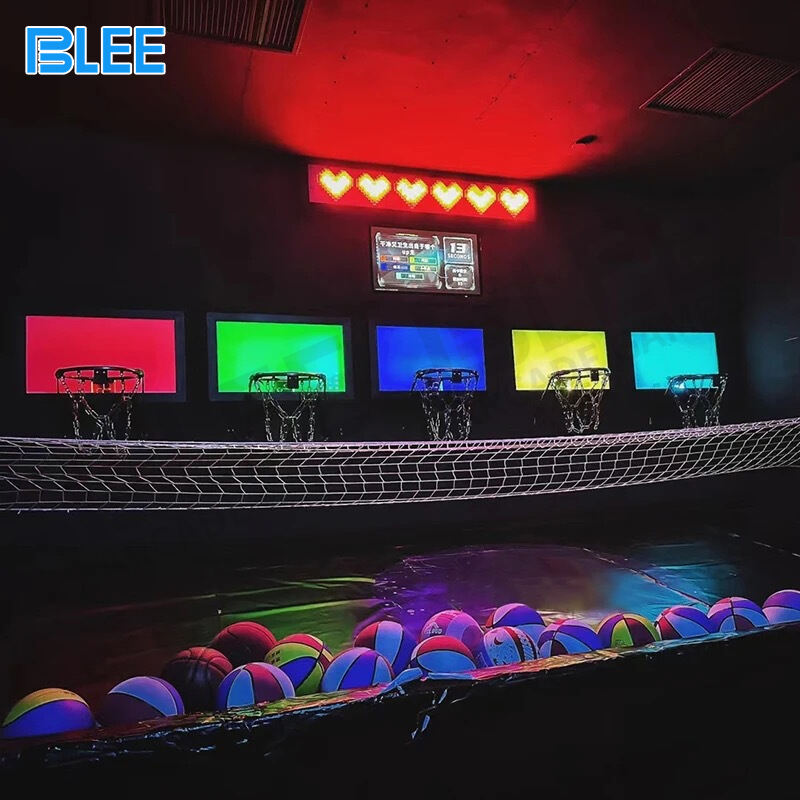Understanding the Arcade Theme Park Market Landscape
Current Growth Trends in Family Entertainment Investments
The family entertainment center (FEC) segment is witnessing significant growth, largely fueled by increasing disposable incomes and a shift in consumer preferences toward interactive and immersive experiences. Industry reports highlight that FECs are now integrating advanced technologies to enhance visitor experiences, thereby boosting investment returns. Notably, investments in the family entertainment sector are expected to surge, reaching billions as more operators adopt hybrid models, blending various entertainment options to cater to diverse audiences. This transformation is pivotal in the industry, setting a new benchmark for investment returns within the family entertainment industry, marking the evolution of FEC growth trends.
Emerging Technologies in Indoor Playground Solutions
Innovations such as augmented reality (AR) and virtual reality (VR) are radically transforming traditional indoor playgrounds, creating immersive play experiences that appeal to tech-savvy families. The integration of smart sensors and IoT devices into playground equipment further enhances operational efficiency by monitoring usage and maintenance needs, thus improving guest safety. Additionally, mobile applications that facilitate interactive play offer the customization of experiences, making these technologies a standard in modern playground solutions. This evolution signals a new era for indoor playground technology, emphasizing the emergence of AR playgrounds with smart solutions in the industry.
Seasonal vs. Year-Round Revenue Models for Amusement Parks
Amusement parks are increasingly adopting year-round revenue models, diversifying their offerings to include seasonal events that capitalize on holiday themes to maximize foot traffic. Data reveals that parks operating year-round can increase overall revenue by up to 30% through strategic special events and promotions during off-peak seasons. Furthermore, integrating indoor attractions allows these parks to operate throughout the year, lessening the dependency on weather conditions. This shift in strategy highlights the importance of adapting event programming to ensure the sustainability of year-round amusement park models, setting the stage for a robust economic framework.
Key Features of Profitable Arcade Theme Park Solutions
Integrating Trampoline Parks with Interactive Gaming Zones
Integrating trampoline parks with interactive gaming zones is a strategic approach to enhance visitor engagement. This combination offers a broader range of entertainment options that appeal to diverse age groups, ensuring a dynamic and immersive experience for attendees. Recent industry trends underscore that venues providing both physical and digital gaming activities report higher visitor retention rates. For instance, case studies reveal that facilities utilizing this integration strategy can experience a 25% increase in repeat visits, highlighting its effectiveness in boosting business growth.
Multi-Generational Appeal of Soft Play & Adventure Zones
Soft play areas alongside adventure zones create a multi-generational appeal that attracts family groups. Soft play zones are designed for younger children, providing a safe and stimulating environment for active play. Meanwhile, adventure zones offer challenges that intrigue older children and adults, thus broadening the demographic reach of the park. Research emphasizes that offering multi-generational activities leads to higher family attendance and satisfaction. Designing spaces that encourage family interaction not only maximizes visitor enjoyment but also promotes longer stays, benefiting overall business performance.
Modular Design for Scalable Outdoor Playground Systems
Adopting a modular design for outdoor playground systems presents numerous advantages for theme parks aiming for scalability and flexibility. Modular designs allow operators to create custom-built systems that can grow in tandem with demand, ensuring cost-effectiveness over time. Market data reveals that utilizing modular systems can reduce installation costs by up to 15%, leading to a faster return on investment (ROI). Furthermore, the flexibility offered by these designs helps accommodate varying space requirements and landscape conditions, making them ideal for different site configurations. This adaptability ensures the playgrounds remain relevant and engaging for visitors.
Calculating Payback Periods for High-Traffic Playground Equipment
Accurate calculations of payback periods are instrumental in assessing the viability of investments in high-traffic playground equipment. By analyzing financial data, operators can determine how long it will take to recoup their investment, thus guiding strategic decisions. Research shows that strategically placed equipment can yield a payback period of less than three years, contingent on traffic flows and usage rates. Hence, regular assessments of financial metrics are vital to ensure alignment with business objectives. Therefore, undertaking a comprehensive analysis of these parameters can lead to sound investment strategies in playground equipment.
Leveraging Hybrid Indoor/Outdoor Visitor Flow Models
Implementing hybrid visitor flow models is a proven method for optimizing space usage and ensuring a seamless visitor experience. This approach reduces congestion during peak hours, enhancing customer satisfaction by smoothly managing transitions between indoor and outdoor attractions. Real-world applications have demonstrated a 20% increase in visitor satisfaction when these models are effectively utilized. Continuous analysis of flow data enables operators to adjust marketing and operational strategies accordingly, enhancing overall efficiency. This strategic management of visitor flow not only improves the customer experience but also positively impacts operational costs.
Upsell Opportunities in Premium Themed Experience Packages
Developing premium-themed experience packages presents significant upsell opportunities, boosting the average spend per visitor. Parks adopting this strategy have seen revenues increase by as much as 40%, as shown in industry surveys. Tailoring these packages to appeal to specific demographics, such as families or corporate groups, further elevates profitability. Creating unique packages for events like birthday parties or corporate retreats ensures a differentiated offering that attracts diverse customer segments. This approach not only enhances visitor revenue but also strengthens customer loyalty by providing memorable, personalized experiences.
Safety & Compliance in Modern Playground Infrastructure
Meeting EN1176 & ASTM Standards for Commercial Play Spaces
Adhering to standards like EN1176 in Europe and ASTM in North America is crucial for ensuring the safety and longevity of playground equipment in commercial settings. These standards not only mitigate legal risks but also enhance brand reputation among safety-conscious consumers. For example, a study revealed that facilities prioritizing safety compliance saw a notable 30% reduction in liability claims. This underscores the importance of stringent safety measures in safeguarding both the business and its patrons.
Durability Testing for High-Capacity Trampoline Systems
Performing rigorous durability testing on high-capacity trampoline systems is essential to guarantee safety and compliance with industry standards. Such testing helps in identifying potential issues early, reducing maintenance costs and preventing serious incidents. Additionally, investing in durable materials can significantly extend the lifespan of trampoline systems, offering longer-term safety and cost efficiency. Regular testing, therefore, becomes a foundation for ensuring trampoline safety and reducing overall maintenance expenses.
Accessibility Considerations in Adventure Park Design
Incorporating accessibility features into adventure park designs enhances inclusivity and broadens market reach. Research has demonstrated that parks prioritizing accessibility have seen a 15% increase in overall visitor numbers, appealing to families with diverse needs. These parks achieve success by consulting with accessibility experts during the design phase, ensuring regulatory compliance and meeting the needs of individuals with varying abilities. Through such inclusive playground designs, operators can help create equal opportunities for all visitors to enjoy the playful experience.
Maximizing Revenue Through Innovative Attractions
Data-Driven Refresh Cycles for Arcade Game Inventories
Implementing data-driven refresh cycles for arcade game inventories is a strategic approach to enhance offerings based on visitor preferences and market trends. Detailed analytics allow operators to discern which games are performing well and which need replacing or upgrading, ensuring that the entertainment offered remains fresh and engaging. Studies indicate that maintaining a dynamic game selection can increase revenue by up to 25%. Therefore, it is crucial to leverage customer feedback and utilize gaming analytics to make informed decisions about inventory changes, thereby attracting more visitors keen on experiencing the latest gaming crazes.
Peak Season Optimization Strategies for Water Park Synergy
Optimizing operations during peak seasons is essential for maximizing revenue and ensuring guest satisfaction in water parks. Strategies, such as implementing dynamic pricing models that adjust entry fees based on expected attendance, can significantly enhance profitability. Comparative studies reveal that effective peak season strategies can result in over 40% revenue increases during high-traffic periods. This involves not just pricing adjustments but also refining operational logistics like staffing levels and attraction availability to match demand, ensuring that guest experiences are both seamless and memorable.
Corporate Partnership Models for Shared-Risk Expansion
Exploring corporate partnerships as a shared-risk model for expansion can effectively alleviate financial burdens while simultaneously attracting new clientele. Such collaborations have been shown to increase marketing efficiency by up to 35%, allowing both parties to expand their reach more effectively. By aligning strategically with brands that resonate with your existing customer base, your park can enhance visibility and broaden its appeal. This approach not only mitigates risks but also leverages each partner's strengths to drive mutual growth and competitive advantage in the highly contested amusement and theme park market.
Global Investment Opportunities in Play Tourism
Emerging Market Potential in Asia-Pacific Regions
The Asia-Pacific region is emerging as a pivotal market for play tourism, bolstered by increasing urbanization and a burgeoning middle class. This growth opens vast opportunities for investors to tap into family-friendly attractions. According to market analyses, investing in these burgeoning markets presents substantial potential returns due to escalating demand for leisure and recreational activities. Building local partnerships can greatly assist in penetrating these markets, allowing companies to leverage existing networks for more rapid and effective expansion. Such strategies are vital in positioning oneself advantageously within this rapidly evolving sector.
Cultural Adaptation of Western Attraction Concepts
Adapting Western attraction concepts to fit local cultures increases the appeal to native audiences, thus boosting visitor numbers. Case studies across various regions highlight that culturally tailored experiences are more likely to succeed commercially, as they resonate deeply with local visitors, enhancing revenue streams. Collaborating with cultural experts throughout the design phase can guard against cultural misalignment and improve the brand's reputation. This approach not only fosters better cultural understanding but also maximizes visitor engagement and satisfaction, ensuring that attractions are not only innovative but also culturally sensitive.
Supply Chain Considerations for Multi-National Deployments
Effective supply chain management is critical when deploying attractions across multiple nations, as it involves navigating regional regulations and sourcing complexities. Reports indicate that well-managed supply chains can cut operational costs by up to 20%, a significant reduction that enhances profitability. Partnering with local suppliers can greatly improve supply chain efficiency, as it shortens lead times and facilitates smoother construction processes. This strategic collaboration allows for better adaptability to local conditions, ensuring timely execution and operational success in diverse and challenging environments.
Measuring Success in Theme Park Investments
Key Performance Indicators for Foot Traffic Conversion
Identifying key performance indicators (KPIs) for foot traffic conversion is essential for theme park operators to evaluate the efficacy of their marketing strategies. By focusing on KPIs such as the percentage of visitors who transition from mere foot traffic into paying guests, operators can gain valuable insights into the effectiveness of their promotional campaigns. Data analysis reveals that a focus on improving these conversion rates can lead to a 20% increase in overall attendance, according to industry benchmarks. Regularly tracking these metrics allows park managers the agility to adjust strategies promptly, optimizing marketing efforts for better results and ensuring that the park remains a popular attraction.
Lifetime Value Calculations for Repeat Visitor Programs
Calculating the lifetime value (LTV) of repeat visitors is crucial for developing effective loyalty programs in theme parks. Understanding LTV helps operators to assess the long-term financial benefits of investing in initiatives aimed at repeat visitors. Studies have shown that investing in these programs can yield a return multiple times the initial investment, as repeat visitors tend to spend more over time. Targeted marketing approaches, informed by detailed LTV calculations, can enhance engagement and boost overall revenue. Such strategies ensure that loyalty programs are not only attractive to repeat visitors but also profitable for the park, fostering sustained patronage.
Sustainability Metrics in Eco-Conscious Park Operations
Implementing sustainability metrics is a vital step for theme parks that wish to assess the environmental impact of their operations. Research indicates that eco-conscious parks not only appeal to today’s environmentally aware consumers but also experience higher visitor engagement. Establishing clear sustainability goals allows parks to actively reduce their environmental footprint, enhancing brand loyalty and attracting new visitors who value eco-responsibility. These parks often see success with visitors who appreciate efforts like energy-efficient facilities and limited waste generation. Ultimately, sustainability metrics serve as a guide for parks striving to create responsible yet dynamic attractions that resonate with modern consumers.
Why Work With BLEE?
Free Project Planning
Free design-driven solutions tailored to your theme, audience, including product selection, quotation, layout design, venue decoration design and business plan.
Globally Proven Solutions
Trusted by 80+ countries with venue bulidding for cross-cultural appeal and sustained ROI.
Complete Range of Products
We have a complete entertainment and amusement product line, can meet your procurement needs in one stop, maximize your cost savings.
7-15 Day Guaranteed Delivery
Modular production system ensures quality equipment shipped within 15 days, minimizing downtime.
Risk-Free Logistics
Doorstep delivery , damage protection, and real-time cargo tracking.
24/7 Lifelong Support
Multilingual technical assistance, instant troubleshooting, and lifetime maintenance commitment.









